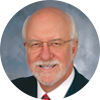It's not my place to assign blame, predict the long-term outcome of these events, or suggest what could or should have happened. And I am not privy to any inside information. But as a longtime friend of Dr. Sid, and a supporter of the standards enforced by CCE, I hope that sharing my thoughts and feelings may be of some value.
"Natural law," wrote Craig Kightlinger, MA, DC, former vice president of the Universal Chiropractors Association (UCA), "must be taken into account, and the leader of old must either sit at the council and consult with the minds of the many, or take his place on the sidelines and let the march of progress pass."11He continued: "Nature is not a pleasing master and natural law is many times cruel. But sooner or later the old leader must place his mantle on the shoulders of the best minds of the many." There is, perhaps, an inevitability to the process, if not the details.
Dr. Kightlinger, himself a school founder (Eastern Chiropractic Institute of New York City), was referring to B.J. Palmer's ouster from the leadership of the protective society he had organized two decades earlier: the UCA. There are ironic parallels in the lives and careers of Palmer and several of the students he inspired to follow in his footsteps. Men such as Sid Williams, Thom Gelardi and Jimmy Parker dreamed grand dreams, listened to their "inner voices," and built substantial institutions that contributed significantly to the growth and development of the profession. Whether we agree or disagree with their politics and philosophies, we should, I believe, respect the vision, determination and skills that led them to create so abundantly, and from the ground up. No matter what the ultimate outcome, Dr. Sid will always be the founder and first president of Life University. He, and we, may take some justified pride and satisfaction in his accomplishment.
We may also take satisfaction, in my opinion, that the COA of CCE drew a line in the sand and stands ready to defend it. As history has repeatedly shown, the chiropractic profession's (sometimes grudging) willingness to adhere to gradually higher standards of training and practice is part of our march toward greater service, respect, responsibility and integration with the wider health care and health science communities. The CCE has been one of the driving forces in this maturation for decades, and contrary to some of the "spin-doctoring" we've seen of late, I believe it has a genuine commitment has a genuine commitment to quality rather than an assault on chiropractic. We must provide the best training we can if the art and science are to progress, and service to patients is to improve.
Our greatest concern, at this moment, should be for the welfare of the Life University students, whose careers as chiropractors are jeopardized by the recent turn of events. Several scenarios have been suggested for insuring the successful completion of their training as doctors of chiropractic. These include:
- continuation of the appeals process with CCE under new adminstrative leadership at the university;
- the possibility of a "teach-out," wherein another CCE-accredited college would provide education, award diplomas and maintain current students' records for certification to licensing boards; and
- The possibility that the Life Board of Trustees would resign in favor of the trustees of another nonprofit, CCE-accredited college - in other words, a merger or amalgamation. (Although Life University does have substantial debt, it also has rather significant assets, and its absorption may be attractive.)
Criticisms have been leveled at several chiropractic colleges for offering partial tuition waivers and grants for moving expenses to Life U. students, and this before resolution of the CCE appeals process. The scavenger quality of these activities may be disconcerting, but this phenomenon may also be part of "natural law." These offers are understandable in light of the horrendously high tuition-dependence of our schools and the plummet in chiropractic college enrollments that we've seen in recent years. Until we succeed in establishing state-supported colleges of chiropractic, this financial dynamic is not likely to change. (Once upon a time, the profession naively expected that the end of proprietary education would mean an end to competition among the chiropractic schools.) Meanwhile, the transfer and relocation packages offered to Life students seem to serve these future chiropractors' needs, real or imagined - and that's a good thing, I suspect.
There is no inherently right or wrong course to be taken; students who have invested their time and educational dollars in the institution should be guaranteed that the quality of chiropractic training improves. And though the CCE is primarily a standard-setting and accrediting agency, I suggest that it, too, has a responsibility to help protect the investment of these future chiropractors. Whatever ultimate actions the CCE, its COA and the university may take, the welfare of our youth should be kept in mind. We owe it to ourselves; to our professional forebears; to future patients; and the Life University student body to indemnify their commitment to the profession.
How far we've come! How far we have to go!
References
- Kightlinger CM. Natural law. Bulletin of the American Chiropractic Association, Jan 1928;5(1):9-10.
Arlan Fuhr,DC
Phoenix, Arizona
Click here for previous articles by Arlan Fuhr, DC.





